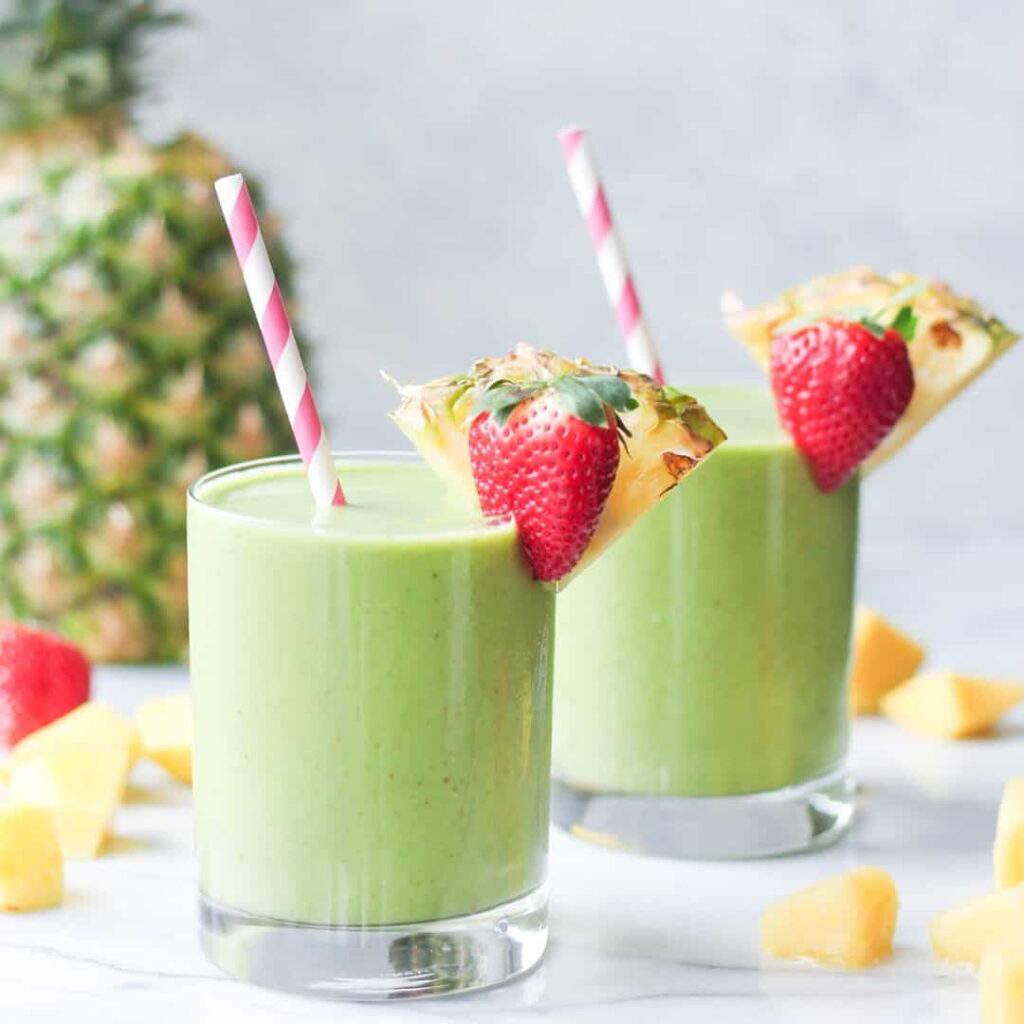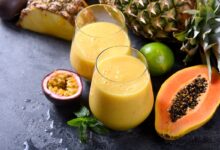Tropical Smoothies Recipes to Try Out

Making tropical smoothies requires making a tasty blend of tropical fruits such as pineapple, mango, strawberry, bananas, yogurt, orange juice, and coconut milk. Using frozen mango, pineapple, and strawberries to make this smoothie makes it even more handy to consume whenever the need arises.
The frozen fruits become luscious and chilly after being blended, providing a more healthful option than traditional cold desserts. This drink, which is high in fiber, protein, and nutrients, can be made in less than ten minutes. Frozen fruit normally makes up the bulk of the recipe to generate a thick and creamy texture. Frozen mangoes, pineapples, and strawberries can be found at grocery shops, which makes preparing this meal easy and fast. They are at their best, therefore their flavor impression will be greater.

How to Prepare Tropical Smoothies
Chop the pineapple and mango into 1-inch slices. Then place them in the freezer in a single layer until they solidify fully. When freezing, hull the strawberries but do not break them apart. To give the smoothie an additional creamy texture, slice up some fresh bananas.
The Greek yogurt and coconut milk fat add a rich, creamy mouthfeel to the beverage. In addition, the yogurt adds extra proteins and probiotics to the drink. This makes it a satisfying snack that also helps with digestion.
Add the solid components (such as ice cubes and frozen tropical fruit) in first. This is so that they rapidly break down into little bits. Next, include the tender components, such as yogurt and sliced banana.
Finally, pour in the liquids, such as fruit juices and coconut milk. They will help break down the sediments by flowing to the bottom of the blender cup. Utilize a medium-speed blender to rotate and chop the items using its sharp blades. To have a thick and smooth consistency, increase to high speed.
How to personalize this Tropical Smoothies recipe
- Replace the coconut milk with almond milk or any other dairy-free beverage of your choice.
- For a taste explosion of tropical flavors, add some passionfruit or guava.
- To add even more fiber and omega-3 fatty acids, mix in some ground flaxseeds or chia seeds.
- A scoop of your preferred protein powder should be added.
- Make use of dairy-free or nut-based yogurts, such as oat, cashew, soy, or almond.
This is one of the simplest and most refreshing smoothie recipes. Paradise depth is achieved by layering many tropical fruits and then balancing them with orange, pineapple, and coconut water. The richest, creamiest consistency can also be produced by beginning with frozen fruits and using vanilla Greek yogurt.
A frozen banana adds creamy richness to coconut water. This saves hundreds of calories when used in place of coconut milk. This is a very refreshing smoothie recipe. You may add protein powder, chia seeds, spinach, or any other fruit and liquids you enjoy or happen to have on hand.
Comparing fresh and frozen fruits
A common misconception is that fresh fruit is healthier. The majority of fruit that is sold there is harvested long before it is ready. This is to prevent it from going bad before it reaches the shop shelves. Less time to ripen indicates less time to absorb all of the nutrients that the environment has to provide. When given the alternative, buying frozen fruit or vegetables is typically the best option. Since fresh fruit is sometimes much more expensive than its frozen equivalent, this makes sense.
The International Food Information Council (IFIC) claims that frozen food has equal or even more nutritional content than “fresh” produce that is sold in stores, in addition to being less expensive. This is because popular fruits like strawberries and blueberries are collected when they are at their freshest, cleaned, packaged, frozen, and delivered straight to your store’s refrigerators.
Fresh fruit may spoil in a few days. On the other hand, frozen fruit is kept for as long as possible when brought home and stored in your freezer.








